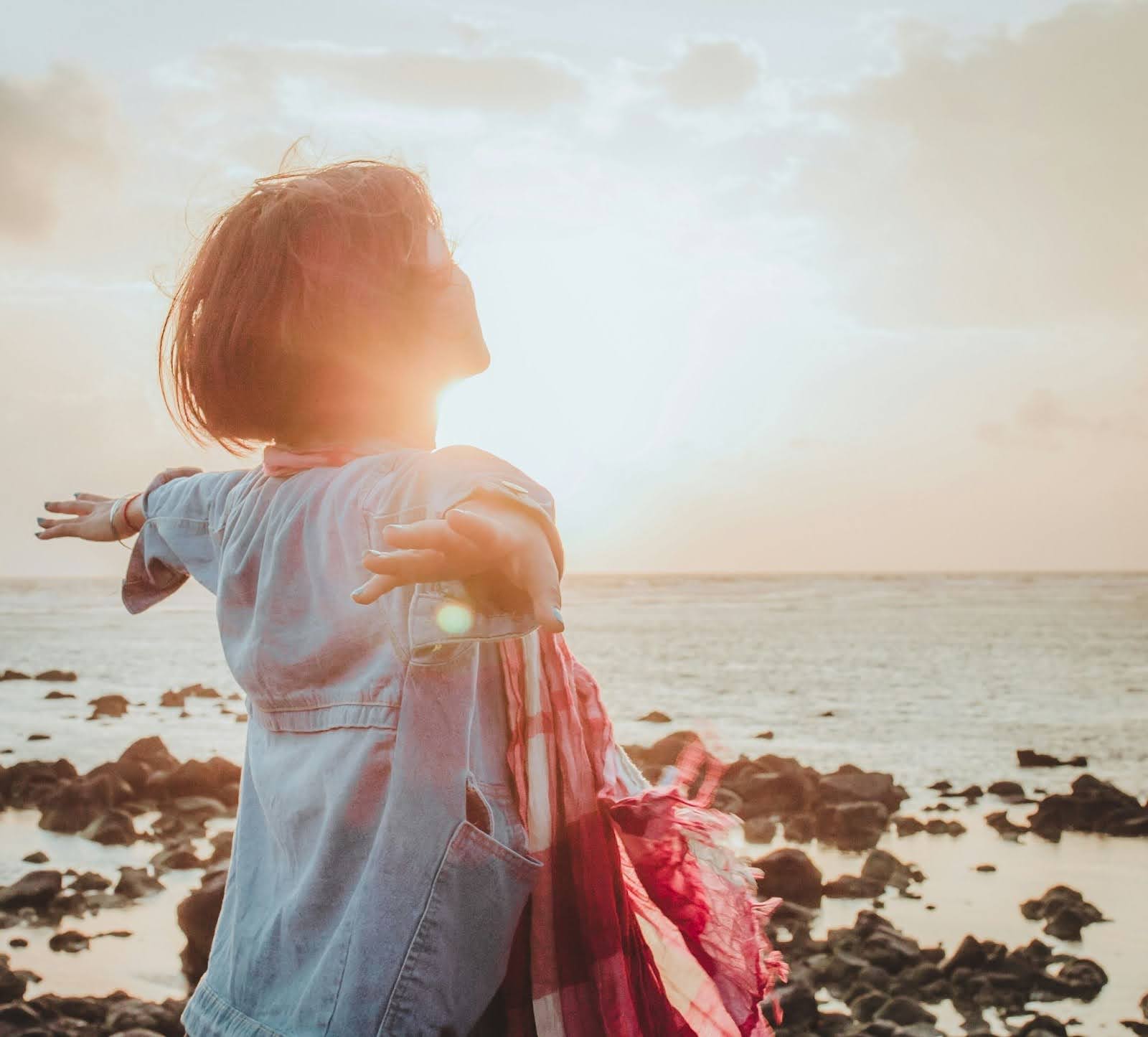Your Cart is Empty

August 20, 2024 8 min read
Take our quiz and find which supplements your body is craving.

Written by Chris Bellanger, BHSc in Nutritional Medicine
In an increasingly interconnected yet paradoxically isolated world, the importance of social relationships and community cannot be overstated. Whether you find yourself in a new city, a different country, or simply seeking to expand your social circle, building positive relationships and finding your community from scratch can be both challenging and immensely rewarding.
By integrating health-focused activities into your social pursuits, you can enhance your physical and mental well-being while forging meaningful connections. Here, we explore strategies and insights to help you embark on this journey with confidence and enthusiasm.
Before diving into the practical steps of building social connections, it’s crucial to understand why these relationships matter. Being social and building bonds are not only rewarding in terms of making friends and learning from others, but they are also vital for our mental and physical health. Research consistently shows that strong social connections are a major factor in maintaining a healthy mental outlook and supporting overall well-being. In fact, studies have demonstrated that people with strong social networks tend to live longer, healthier lives. These relationships can provide emotional support, reduce stress, and even improve immune function. (1, 2)

On the other hand, the absence of social bonds can lead to feelings of loneliness, depression, and anxiety. In our digital age, where virtual interactions often replace face-to-face connections, it's easy to lose sight of the importance of real-world relationships. While social media allows us to stay connected with friends and family across distances, it can also contribute to a sense of isolation if not balanced with in-person interactions. (2)
Finding a sense of belonging can be challenging in today’s fast-paced world. However, with a bit of effort and the right approach, you can connect with like-minded individuals who share your passions, whether online or in your local community. Let’s explore practical ways to discover and engage with communities that resonate with your interests, both virtually and in person, while also reaping physical and mental health benefits.
If you have a particular interest or hobby that you’re passionate about, the internet offers a vast array of platforms where you can connect with others who share your enthusiasm. Online forums are a great starting point. These spaces allow you to engage in discussions, share knowledge, and build friendships with strangers who have similar interests. Simply search for a forum related to your hobby, and you’ll likely find a vibrant community ready to welcome you.
Facebook is another excellent resource. With thousands of groups dedicated to various topics, Facebook allows you to join communities centered around your interests. Whether you’re into cooking, photography, or gardening, there’s likely a group for you. For instance, if you're interested in health and wellness, you might join a group focused on healthy recipes or fitness tips, which not only provides a space to share your thoughts but also opens up opportunities to connect with people who prioritize their health.
Interestingly, dating apps are not just for finding romantic partners anymore. Some apps now offer features that help you connect with people nearby who share similar interests. This can be a fun way to meet new friends in your area. Platforms like Bumble have introduced modes such as "Bumble BFF" specifically designed to help you find friends rather than romantic dates, including those interested in outdoor activities or fitness, allowing you to combine socializing with physical activity.

While online communities are fantastic, nothing beats the connections you can build in your local area, especially when you can engage in activities that boost your physical and mental health. To start, identify your interests and values. What activities, causes, or hobbies are you passionate about? This self-reflection will guide you in finding groups and organizations that align with your passions.
Platforms like Meetup.com, Nextdoor, and Facebook are valuable tools for discovering local groups. Whether you're interested in joining a club, volunteering for a nonprofit, or attending local events, these platforms can help you find opportunities to connect with others who share your interests.
For example, consider joining a local walking group or cultural tour. Walking groups offer a low-impact form of exercise that can significantly benefit your cardiovascular health, reduce stress, and improve your mood. At the same time, walking with others provides an excellent opportunity to engage in conversation and build friendships. Similarly, cultural tours allow you to explore your city or region's history and heritage while on foot—combining learning, exercise, and social interaction in one activity.
Another great way to connect with others while enhancing your health is by visiting local farmers' markets. Farmers' markets are not only a place to buy fresh, healthy produce but also a social hub where you can meet like-minded individuals who are passionate about nutrition and sustainable living. You could even join or start a healthy cooking group, where members gather to prepare nutritious meals using ingredients from the market. This not only improves your diet but also fosters a sense of community and shared purpose.
Building connections within your immediate neighborhood can be incredibly rewarding for your mental well-being. Start by getting involved in local government or neighborhood associations. Attend town hall meetings, join a community board, or volunteer for a local political campaign. These activities not only connect you with civically engaged neighbors but also allow you to contribute to your community, which can provide a strong sense of purpose and belonging—both crucial for mental health. (3)
Social media is another effective tool for connecting with local groups. Follow local businesses, organizations, and community leaders on platforms like Facebook, Instagram, or Nextdoor. Engage with their posts and events to stay informed about what's happening in your area.
Don’t be afraid to introduce yourself to neighbors, strike up conversations, and ask for recommendations on local groups or activities. For example, you might find a neighborhood yoga class or join a local gardening club, both of which offer physical benefits while providing a setting to meet others.
Sometimes, the best way to build community is by taking the initiative to bring people together. Hosting a simple neighborhood event can break the ice and foster connections. Need some ideas? How about a Sunday afternoon dessert party, inviting neighbors within a five-house radius? This is a simple way to create a fun and relaxed atmosphere where neighbors can mingle and get to know each other.
Similarly, you could host a summer movie night in a nearby park, inviting both friends and neighbors to join.
For a more health-focused approach, consider organizing a neighborhood potluck with a theme centered around healthy eating. Encourage guests to bring nutritious dishes and share recipes, turning the event into both a social and educational experience. Or, host a fitness class in your backyard or a nearby park, inviting neighbors to join you for yoga, pilates, or a simple stretching session. These activities promote both physical health and social interaction, helping to build stronger community ties. (1, 2)
Sometimes, the simplest actions can lead to the strongest connections. Walking your dog, or even just taking a stroll around your neighborhood, can be an excellent way to meet your neighbors. Introduce yourself, ask for their names, and take the time to engage in small talk. Over time, these casual encounters can lead to deeper connections. The simple yet consistent effort can help make a new place feel like home while maintaining physical activity levels to boot.

Solo travel is often romanticized as an empowering and soul-enriching experience, and while it certainly can be, it’s natural for first-timers to grapple with the fear of loneliness. The thought of being alone in a foreign place, surrounded by strangers, can be intimidating.
However, this fear is more myth than reality. Solo travelers, far from being isolated, often find themselves surrounded by opportunities to connect with others. Here are some tried-and-true strategies to help you cultivate friendships, create unforgettable memories, and maintain your health during your solo journey.
One of the best ways to get acquainted with a new city and its culture is through a walking tour. These tours are often free or inexpensive and provide a perfect setting for meeting fellow travelers. The informal atmosphere of a walking tour, where you’re not tied to a specific seat or table, makes it easy to strike up conversations with others. Walking is also a great form of exercise, contributing to cardiovascular health and reducing stress. (4) After the tour, group meals or drinks are common, providing further opportunities to socialize and exchange travel stories.
Hostels are synonymous with solo travel. Not only do they offer budget-friendly accommodation, but they also serve as social hubs for travelers from around the globe. The communal spaces in hostels—such as lounges, kitchens, and dorm rooms—are designed to foster interaction. Whether you’re sharing a meal in the kitchen, joining a hostel-organized pub crawl, or simply hanging out in the common area, you’ll find plenty of chances to meet like-minded adventurers. Even if you’re not staying in a hostel, check out their event schedules; many hostels welcome non-guests to join their tours, dinners, or social events, many of which involve walking, dancing, or other physical activities.
Staying with a local host through platforms like Airbnb provides a more intimate experience and a direct connection with the culture of the place you’re visiting. Unlike hotels, where interactions are typically limited to brief exchanges with staff, staying in someone’s home offers a unique opportunity to learn about local customs, get insider tips, and even join your host in their daily activities, such as hiking, biking, or visiting local markets. Some hosts go above and beyond, inviting guests to family dinners or neighborhood events, where you can further immerse yourself in the local community.
Bars are often gathering places where locals unwind after a day’s work. As a solo traveler, sitting at the bar instead of a table not only makes you more approachable but also provides a natural opportunity to strike up a conversation. Bartenders are often locals with a wealth of knowledge about the area, and they can be great sources of recommendations for places to visit and things to do. Some may even invite you to join them or their friends for after-work activities, further expanding your social circle.
Building a strong sense of community takes time and effort, but the rewards are well worth it. Be patient, open-minded, and persistent in your efforts. Not every neighbor or acquaintance will be interested in getting to know you, and that’s okay. Focus on those who are, and you’ll eventually build a network of friends and acquaintances who share your interests and values.
It’s important to remember that genuine friendships often take time to develop. It may take several encounters before you feel a real connection with someone. Don’t be discouraged if your initial efforts don’t immediately yield deep friendships. Building trust and camaraderie is a gradual process, and each step brings you closer to forming meaningful relationships.
In conclusion, whether you’re looking to connect online or in person, remember that community is about more than just proximity—it’s about shared experiences, mutual support, and a sense of belonging. By embracing openness, proactivity, authenticity, and persistence, you can forge meaningful connections and cultivate a sense of community wherever you go. True belonging is not about fitting in but about being yourself and finding those who appreciate and value you for who you are.
As you embark on this journey to build positive social relationships and find your tribe, take the initiative, be open to new connections, and enjoy the process. Whether you’re exploring a new city, volunteering for a cause, or simply striking up a conversation with a neighbor, the world is full of opportunities to connect with others, enhance your well-being, and contribute to a better, more connected world.

September 22, 2025 9 min read
Unlock the full benefits of creatine for women. Boost energy, beauty, and brainpower with Amandean’s clean formulas.

September 20, 2025 10 min read
Algae-based omega 3 by Amandean is a plant-based source of EPA & DHA. A cleaner, sustainable alternative to fish oil. Learn more and shop now.

September 18, 2025 11 min read